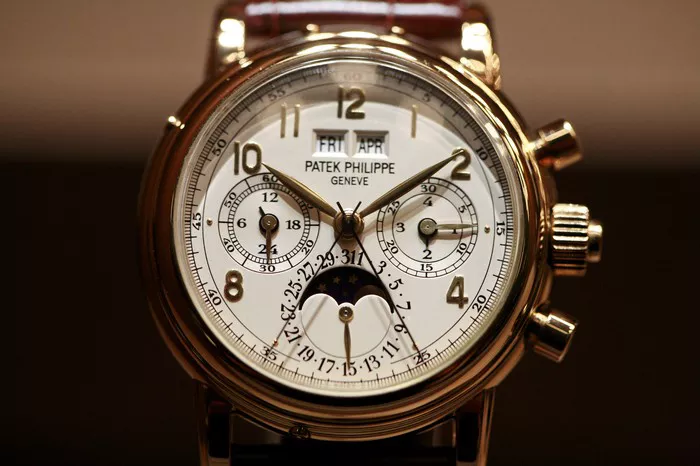Owning a Patek Philippe watch is a privilege cherished by many enthusiasts, given its exquisite craftsmanship, precision engineering, and timeless elegance. However, one common question that often arises among Patek Philippe owners is how often they should wind their prized timepiece. In this article, we’ll explore the intricacies of winding a Patek Philippe watch, providing guidance on the optimal winding frequency to ensure optimal performance and longevity.
Understanding the Mechanics of Winding:
Manual vs. automatic: Patek Philippe offers both manual-winding and automatic (self-winding) watches in its collection. Manual-winding watches require manual intervention to wind the mainspring, while automatic watches utilize the motion of the wearer’s wrist to automatically wind the mainspring via a rotor.
Mainspring tension: The mainspring is a critical component of a mechanical watch, storing the energy necessary to power the movement. Winding the mainspring tightens it, storing energy that is gradually released to power the watch’s movement over time.
Power reserve: Patek Philippe watches feature varying power reserve capacities, indicating the length of time the watch can operate on a fully wound mainspring without additional winding. Power reserve indicators are often found on the dial or movement of the watch, providing a visual indication of the remaining power reserve.
Factors Influencing Winding Frequency:
Type of movement: The type of movement in a Patek Philippe watch – manual or automatic – dictates the winding frequency. Manual-winding watches require regular winding to maintain optimal power reserve, while automatic watches are continuously wound through wrist movement during daily wear.
Power reserve duration: The power reserve duration varies among Patek Philippe models, with some offering longer reserve durations than others. Watches with shorter power reserves may require more frequent winding to ensure continuous operation.
Wear frequency: For manual-winding watches, the frequency of wear plays a significant role in determining the winding frequency. Watches worn regularly may require less frequent winding, while those worn infrequently may need to be wound more often to maintain adequate power reserve.
Personal preference: Some Patek Philippe owners prefer to wind their watches daily as part of their routine, ensuring that the timepiece is always running at optimal performance. Others may choose to wind their watches only when necessary, based on the power reserve indicator or when the watch stops running.
Guidelines for Winding a Patek Philippe Watch:
Manual-winding watches: For manual-winding Patek Philippe watches, it is recommended to wind the watch fully once a day, preferably in the morning, to ensure maximum power reserve throughout the day. Avoid overwinding the watch, as this can put unnecessary stress on the movement.
Automatic watches: Automatic Patek Philippe watches are designed to be worn regularly, allowing the motion of the wearer’s wrist to keep the watch wound. If an automatic watch is not worn for an extended period, it may require manual winding to ensure sufficient power reserve before wearing.
Power reserve indicator: Pay attention to the power reserve indicator on your Patek Philippe watch, if available, to monitor the remaining power reserve. If the power reserve is low, consider winding the watch to ensure continuous operation.
Consistency is key: Establish a consistent winding routine based on your watch-wearing habits and personal preference. Whether you choose to wind your Patek Philippe watch daily, weekly, or as needed, maintaining a regular winding schedule helps ensure optimal performance and longevity.
Conclusion:
In conclusion, the optimal winding frequency for a Patek Philippe watch depends on various factors, including the type of movement, power reserve duration, wear frequency, and personal preference. Manual-winding watches require regular winding to maintain optimal power reserve, while automatic watches rely on wrist movement for continuous winding. By understanding the mechanics of winding and following guidelines for winding frequency, Patek Philippe owners can ensure that their cherished timepieces run smoothly and accurately for years to come. Whether winding daily as part of a morning routine or periodically based on power reserve indicators, maintaining a consistent winding schedule is essential for preserving the beauty and performance of these exquisite watches.

